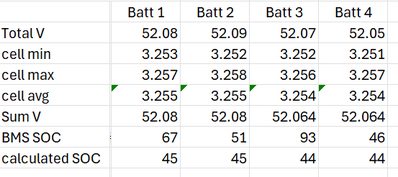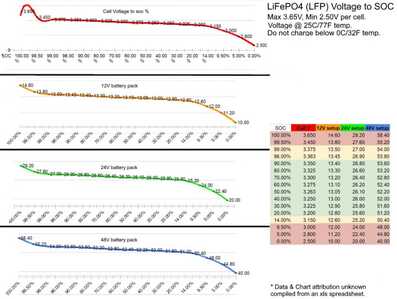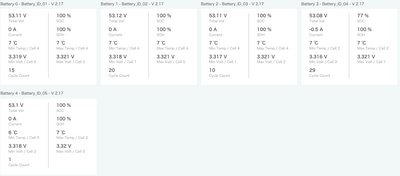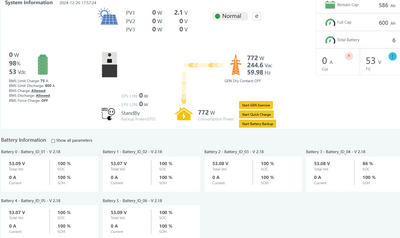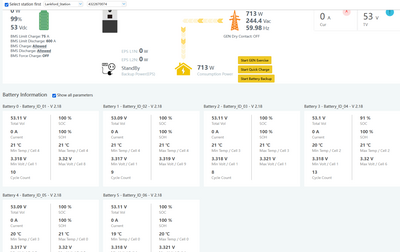@jlankford
Thanks for your thorough response. I understand what you're saying, but in one sense, I don't care which is out of whack, one battery, or the others, the voltage or SOC--I just want the damn things balanced so I have a sense of how much capacity I have left. I have a significant chunk of change invested in these and the inverter, and I just want the features they have to work well enough that I can go a couple hours without feeling like I need to check on them.
But, I see that going off the voltage, they are all pretty close--however, once they start to discharge, that one battery that the SOC always starts dropping first, and fastest, is always the lowest voltage by just a little, and also show the highest current discharge--at low loads by .5-1.5 amps, higher load 2+amps. Further, the battery that shows the highest SOC, is always the last to register any number of amps in discharge--usually 0 at low loads, often half of that registered by what I'm calling the lowest battery by SOC. And, as the SOC values between the high and low batteries grows, so does the difference in voltage between them.
I'm reluctant to extrapolate the SOC based on voltage, and then bank on that--being cautious because I don't want to tank the battery. I believe there is some difference in how they are discharging, and that 2 batteries are misbehaving, with opposing performance--ignoring the SOC. I've done as suggested by 2 different folks at EG4, and I don't see that anything has changed significantly. I am going to check on the continuity between the batteries and bus--but I'm not really expecting to learn anything there. I wiped all contact areas with denatured alcohol before assembling, and torqued to spec. Unless one of the battery cable lugs was crimped poorly, there shouldn't be any significant difference.
I am also concerned about the generator charging based on SOC, as you describe testing. As you point out, the total battery bank SOC will register a higher number than the individual batteries. I was already doing the math to try to estimate when I might need to start generator charging and it seems like 60-65% SOC, if I want to be safe--based on SOC, but not really sure exact SOC... And, if you need to do this, it'll be kicking the generator on earlier, and thus more often than I should really need with the 5 batteries--maybe I should've only bought 2--and spent the rest on propane.
Another thing to note, when I have been at the cabin, the numbers I'm seeing on monitor center are consistent with those displayed on the individual batteries. I tend to be more familiar with the monitor center, than the 6000xp display, mostly because I use it more, being away from the cabin for 2 weeks at a clip--and only being there for 2 days at a time. Plus, I haven't found the 6000XP to be very user friendly.
Right now, I have a frustrating situation where the cbin indoor temp is approaching freezing, and not having a reliable sense of the SOC, I'm reluctant to run the heat, but I'm going to have to because the temps if going to go down to around 5 degrees tonight, and it'll probably drop to 10-15 inside. The battery manuals don't recommend charging batteries below freezing--right now, they're about 33 degrees. We might actually get some sun tomorrow, but even if we have full sun, it won't offset what the mini-split will use togetthe temp up to around 40. I might just put it on standby, until I can get up there after Christmas.
Thanks, Brad




